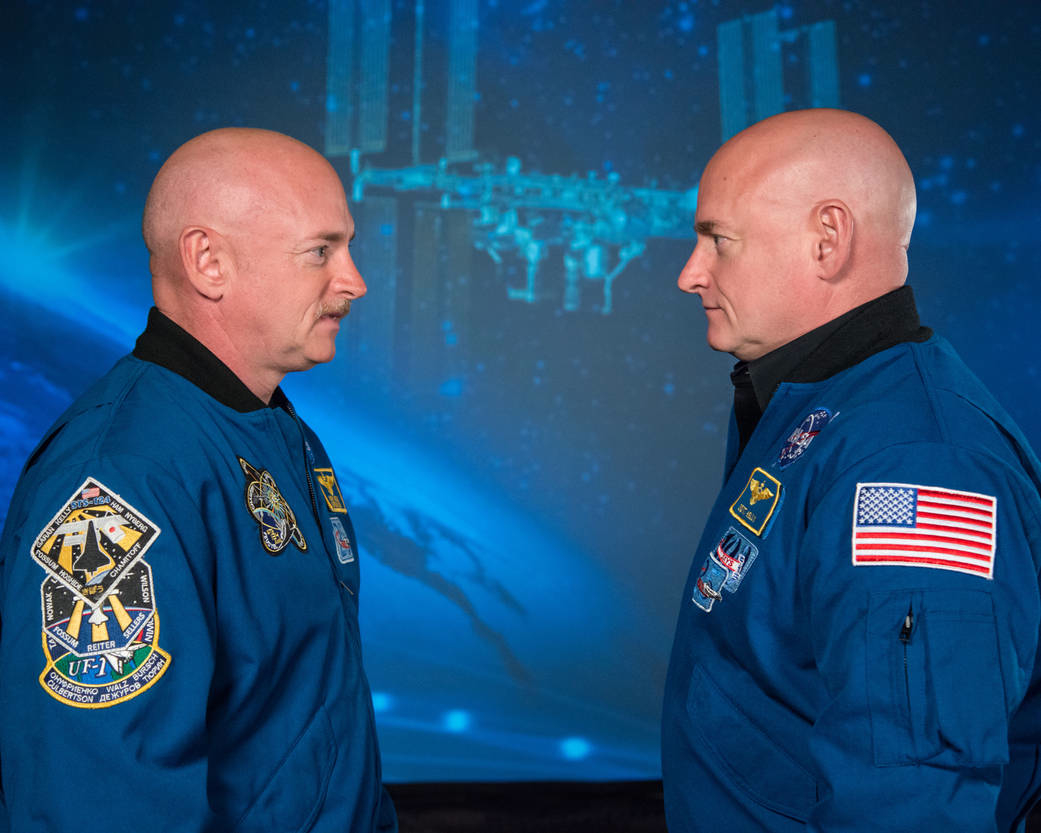
If Albert Einstein is correct—and let’s face it, recent discoveries have proved that he has been right about pretty much everything so far—Scott Kelly is now slightly younger than his identical twin Mark. Not because he was born six minutes later (because, of course, identical twins are conceived at precisely the same time, regardless of which order they emerge in) but because Scott has just returned to Earth after spending a year on the International Space Station (ISS), orbiting our planet at 17,000mph, while Mark stayed at home.
Some years ago NASA identified a virtually unique opportunity: they had two fully qualified astronauts on the payroll, who were not only brothers, but were identical twins. John Charles, senior executive with Nasa’s human research programme, said this presented a ‘once-in-a-space-programme opportunity’, and a plan was made to send one twin into space for a year—twice the normal length of time spent on the ISS—while his brother would be monitored on Earth as a ‘control’.
Duly, Scott Kelly was jetted up to the ISS for almost all of 2015 and the first two months of 2016, while Mark (who has taken part in several space missions, including one when he was space shuttle commander on Endeavour’s final flight, but retired from NASA in 2011 to assist with the recovery of his wife, congresswoman Gabrielle Giffords, who’d been shot in the head) kept his feet firmly on the ground.
As scientific testing sample sizes go, it was tiny, and any conclusions drawn will acknowledge this fact, but the experiment provides NASA with a rare opportunity to analyse a human being’s biological reaction to conditions faced in space, such as zero gravity and elevated levels of radiation, as compared to a genetically identical person who has remained on the ground.

Scientists are busy contrasting the brothers’ bone density and muscle mass, and will report their findings in the near future, but one immediately obvious change was that Scott had grown up to two inches taller than Mark, because gravity hadn’t been compacting the disks in his spinal column. On the downside, he’s more likely to have brittle bones, a puffy face, smaller heart and potential balance issues.
According to the theory of relativity—specifically to an effect known as the Twin Paradox, named after a hypothetical thought experiment in special relativity, during which Einstein painted a mental image of identical twins, one of whom makes a journey into space in a high-speed rocket and returns home to find that the twin who remained on Earth has aged more—Scott should now be slightly younger. As Mark explained to media prior to waving his brother off in 2015: ‘Essentially, time will pass slightly more slowly for Scott than for me because he will be travelling at a greater speed relative to me.’
However, because the ISS only dawdles along at 17,000mph relative to Earth’s surface, when Scott touched down in Kazakhstan at 04:26 GMT yesterday, after a 340-day mission, he will have aged only about three milliseconds less than his now-senior sibling—a differential so small that even NASA can’t measure it. Both men are 51 years old, but at least they now know who should get to blow out the candles first on their 52nd birthday.
